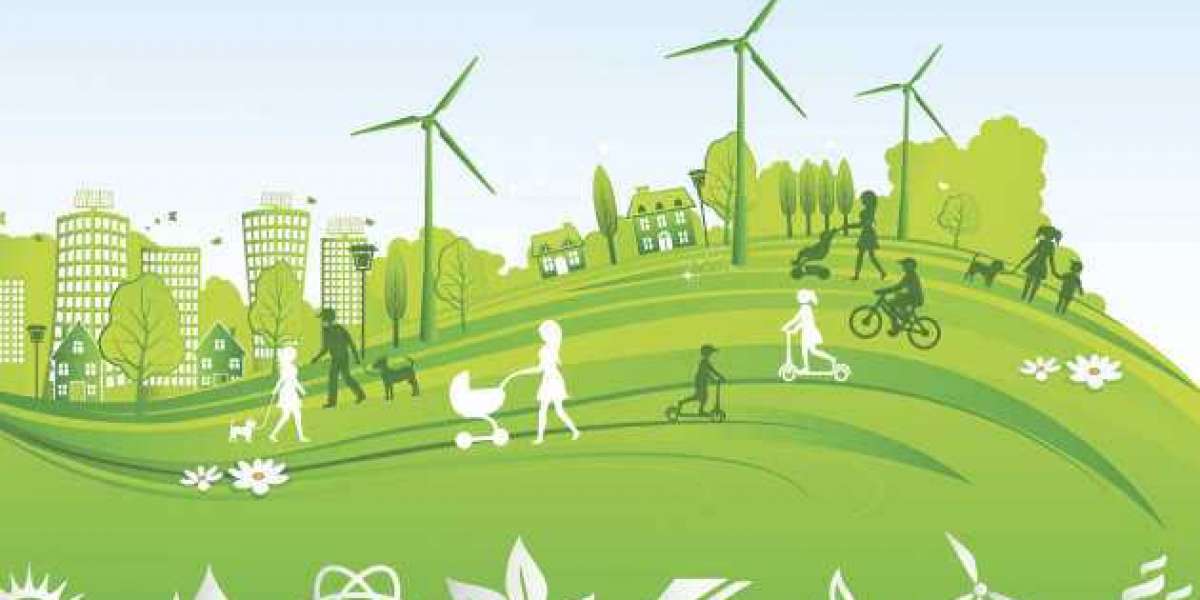Access to energy is a key pillar for human wellbeing, economic development, and poverty alleviation. Ensuring everyone has enough access is an ongoing and pressing challenge for global development.
However, our energy systems also have important environmental impacts. Historical and current energy systems are dominated by fossil fuels (coal, oil, and gas) which produce carbon dioxide (CO2) and other greenhouse gases– the fundamental driver of global climate change. If we are to meet our global climate targets and avoid dangerous climate change, the world needs a significant and concerted transition in its energy sources.
Balancing the challenge between development and environment, therefore, provides us with the ultimate goal of ensuring everyone has access to enough sustainable energy to maintain a high standard of living.
INTRODUCTION
At the start of the Industrial Revolution, it was discovered that the energy in fossil fuels can be unlocked to make work more productive. This finding transformed human development: for most of history, living conditions across the world were equally poor. This began to change, rapidly, once we learned how to use coal, oil, and gas. In more recent years, we have also gained access to modern renewables and nuclear power.
The increasing availability of cheap energy has been integral to the progress we’ve seen over the last few centuries. Energy access is one of the fundamental driving forces of development. The United Nations says that “energy is central to nearly every major challenge and opportunity the world faces today.”
But energy production has downsides as well as benefits. There are three main categories:
- Air pollution: An estimated five million people die prematurely every year as a result of air pollution; fossil fuels and biomass burning are responsible for most of those deaths
- Accidents: As well as deaths caused by the byproducts of energy production, people die in accidents in supply chains, whether in the mining of coal, uranium or rare metals; oil and gas extraction; the transport of raw materials and infrastructure; construction; or their deployment
- Greenhouse gas emissions: Perhaps the most widely discussed downside is the greenhouse gases emitted by energy production, which are a key driver of climate change.
All energy sources have negative effects. But they differ enormously in the size of those effects. That difference can be easily summed up: by all metrics, fossil fuels are the dirtiest and most dangerous, while nuclear and modern renewable energy sources are vastly safer and cleaner.
From the perspectives of both human health and climate change, it matters less whether we use nuclear power or renewable energy, and more that we change to one or both of them rather than fossil fuels.
More than ever, energy decision-makers need to take a hard, evidence-based look at where they stand and the implications of the choices they make.
The rapidly growing global electrical energy demand has already raised concerns over supply difficulties, exhaustion of energy resources and heavy environmental impacts (ozone layer depletion, global warming, climate change, etc.). The global contribution from energy consumption is shown below:

GLOBAL ENERGY CONSUMPTION
Source: https://yearbook.enerdata.net/total-energy/world-consumption-statistics.html
Most of the growth in global electricity consumption occurred in Asia (almost 80%, with China accounting for nearly 60%). Electricity demand in China accelerated against steady economic growth and industrial demand. Demand also increased in India, South Korea, Japan, and Indonesia.
Electricity consumption in the United States, which dipped by 1% in 2017, recovered in 2018 (+2.2%). Most of this increase came from the residential sector (+6.2%), mainly due to increased electricity consumption for appliances (representing around half of the electricity consumption) and air-conditioning (nearly 90% of US homes use centralized or house individual air conditioners). Economic growth and industrial demand also raised power consumption in Canada, Brazil, and Russia. It also increased in Africa, especially in Egypt, and in the Middle East, spurred by Iran.
As in 2017, electricity consumption remained stable in Europe in 2018: it declined in France and Germany, stagnated in other large countries (UK, Italy, Spain) and it increased in the Netherlands, Poland, and Turkey.
In this scenario, energy demand rises by 1.3% each year to 2040, with increasing demand for energy services unrestrained by further efforts to improve efficiency. While this is well below the remarkable 2.3% growth seen in 2018, it would result in a relentless upward march in energy-related emissions.
There has been a recent report by EIA (U.S. Energy Information Administration) projecting that there will be a nearly 50% increase in world energy usage by 2050 which will be led by growth in Asia.

So, the question arises, how this need will be fulfilled? How environmentally friendly or renewable sources can play a part?
SHARE OF RENEWABLE ENERGY
Today, traditional biofuels remain the largest source of renewables, accounting for 60-70 percent of the total. Traditional biomass remains the dominant fuel source for cooking heating across many low-income households. The World Bank reports that only 7% of the world’s low-income households have access to clean fuels and technologies for cooking; the average share in Sub-Saharan Africa was 13%; and approximately one-third in South Asia.
The share of renewable energy sources (RES, including hydropower) within the global power generation mix, which has been rising quickly since the end of the 2000s, grew by nearly 1 percentage point (+0.8 pts) in 2018, to almost 26%.

GROWTH OF RENEWABLE ENERGY SOURCES BY REGION
Favorable hydro conditions raised renewable power generation in Europe, Brazil, India, Thailand, Australia, and New Zealand.
Renewables now cover 36% of the power mix in Europe, 26% in China and around 18% in the United States, India, and Japan.
YEARS OF IMPACT
Most of the growth comes from new wind and solar capacity, supported by ambitious climate policies in the European Union, the United States, China, India, Japan, and Australia, and by the dramatic fall in solar and wind, development costs over recent years, enabling developing countries to expand their renewable capacity base. The capital cost has continued to decline for variable renewables. Out of all the renewables, Solar PV has the steepest decline. Capital costs for solar PV continued to decline in 2018 and are down three-quarters since 2010. Capital costs for onshore wind are down 20% since 2010.

CHANGE IN GLOBAL WEIGHTED CAPITAL COSTS FOR NEWLY COMMISSIONED POWER CAPACITY, 2010-2018
If we deep dive into Solar PV because there is the maximum reduction cost, we found that the cost of all kinds of solar PV modules has fallen substantially in recent decades.

SOLAR PV MODULE COST 2010-2018
RENEWABLE ENERGY INVESTMENT
Shifting our energy systems away from fossil fuels towards renewable technologies will require a significant financial investment. But how much are we really investing in the sector?
After the 2008-2009 economic crisis, there was a 42% increase in renewable energy investment. After 3 years (2011-2013) of the decline in solar energy, there was again a rise in global investment in all sectors which started stabilizing in 2018. Although, there was a decline of 11% on the previous year. The main reasons for the decline were a downturn in solar findings in China in response to a tightening in government policy, and lower average capital costs per megawatt for both solar and wind in most parts of the world.

GLOBAL TRENDS IN RENEWABLE ENERGY INVESTMENT BY SECTOR
There is much stabilization in investment in developed regions like Europe, the United States after 2011 and we can see that China is the biggest investor since 2013 in all sectors.

GLOBAL TRENDS IN RENEWABLE ENERGY INVESTMENT BY REGION
VISION FOR FUTURE: SAFE MODERN RENEWABLE ENERGY SOURCES
The modern renewable energy sources are not only safe but also low carbon.

In the visualization plotted above, the death rates per unit energy (on the y-axis) versus each source’s greenhouse gas emissions per energy unit (on the x-axis).
This measure of greenhouse gas emissions considers the total carbon footprint over the full lifecycle; figures for renewable technologies, for example, take into consideration the footprint of the raw materials, transport, and construction. These figures are adopted as reported in the IPCC’s 5th Assessment Report (AR5), and more recent life-cycle figures by Pehl et al. (2017) which look at the emissions intensities of technologies in ‘2°C-compatible’ energy transitions to 2050.
The size of each bubble represents its share of global primary energy production in 2018 (including traditional biomass in the total).
There are few trade-offs here – the safer energy sources are also the least polluting. Coal performs poorly on both metrics: it has severe health costs in the form of air pollution and emits large quantities of greenhouse gas emissions per unit of energy. Oil, then gas, are better than coal but is still much worse than nuclear and renewables on both counts.
Nuclear, wind, hydropower and solar energy all cluster in the bottom-left of the chart. They are all safe, low-carbon options. But they still account for a very small share of global energy consumption – less than 10% of primary energy – as we see from the bubble size.
There is fierce debate about which low-carbon energy technologies we should pursue. And there are of course other aspects to consider, such as cost, construction times, and location-specific resource availability. But on the basis of human health, safety and carbon footprint, nuclear and modern renewables are both winners. A number of studies have found the same: there are large co-benefits for human health and safety in transitioning away from fossil fuels, regardless of whether you replace them with nuclear or renewables.
Fossil fuels are killing millions of people every year and endanger many more from the future risks of climate change. We must shift away from them, drawing on all of our available options to do so.
Thank you so much for your reading!
References and Sources:
https://www.eia.gov/ - U.S. Energy Information Administration
https://www.iea.org/ - International Energy Agency











